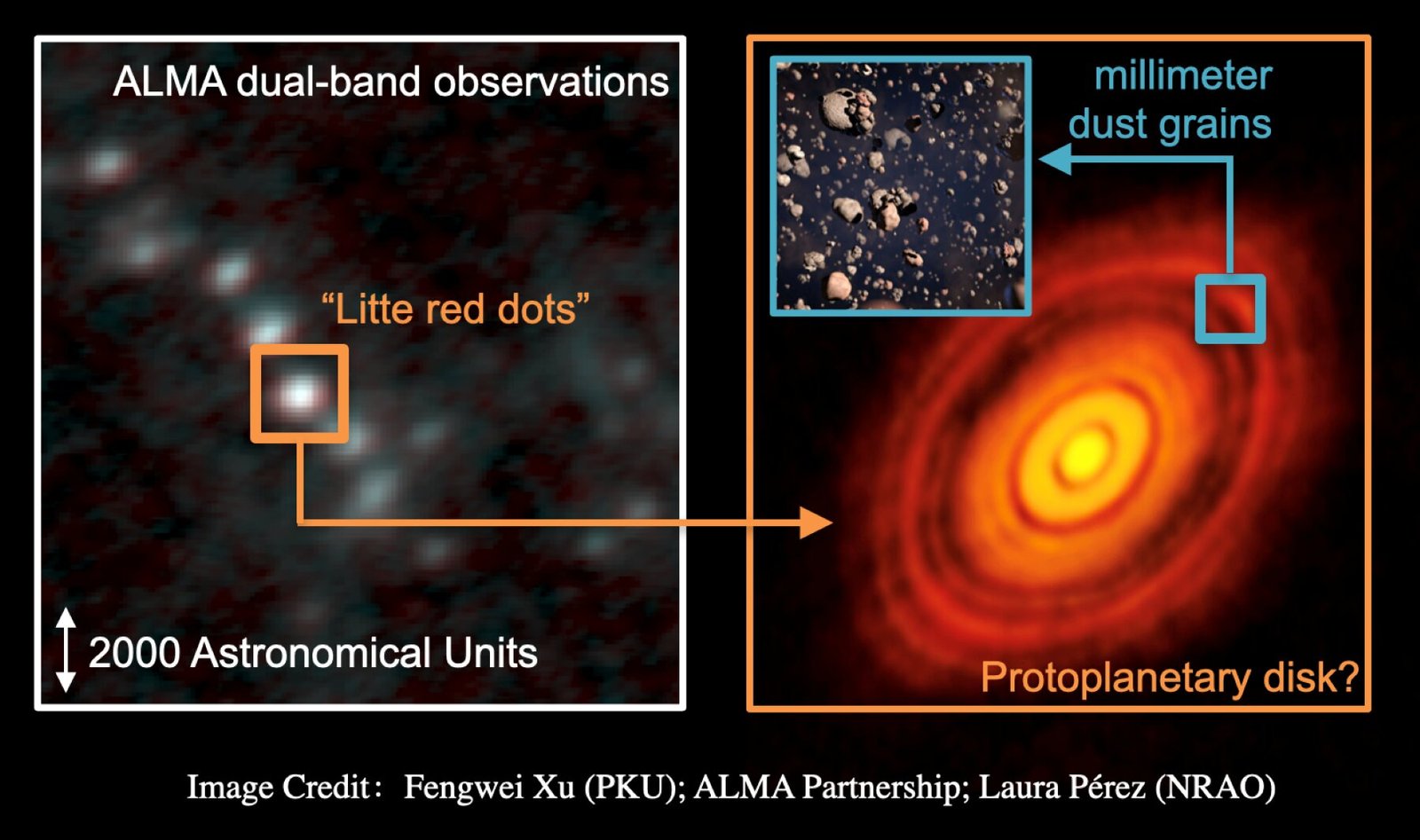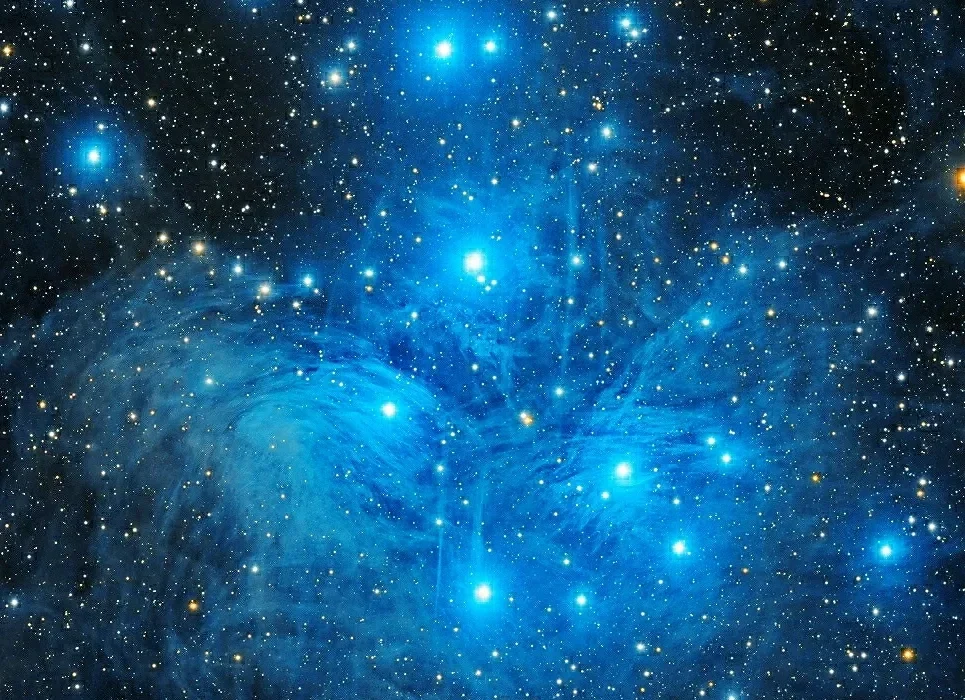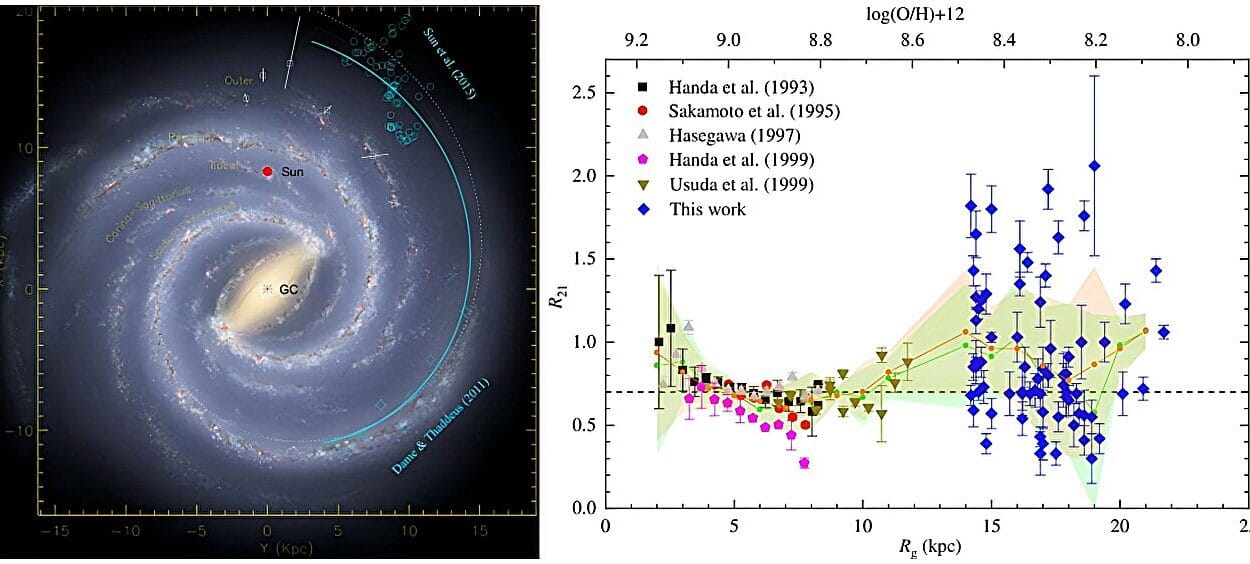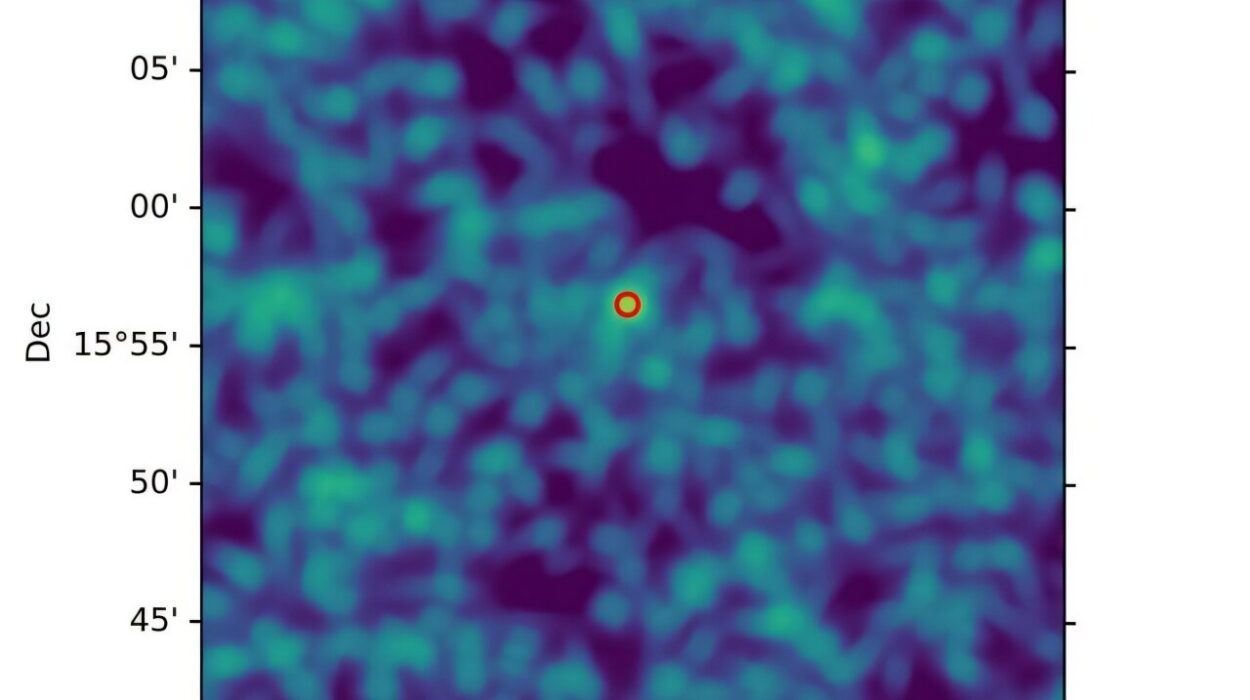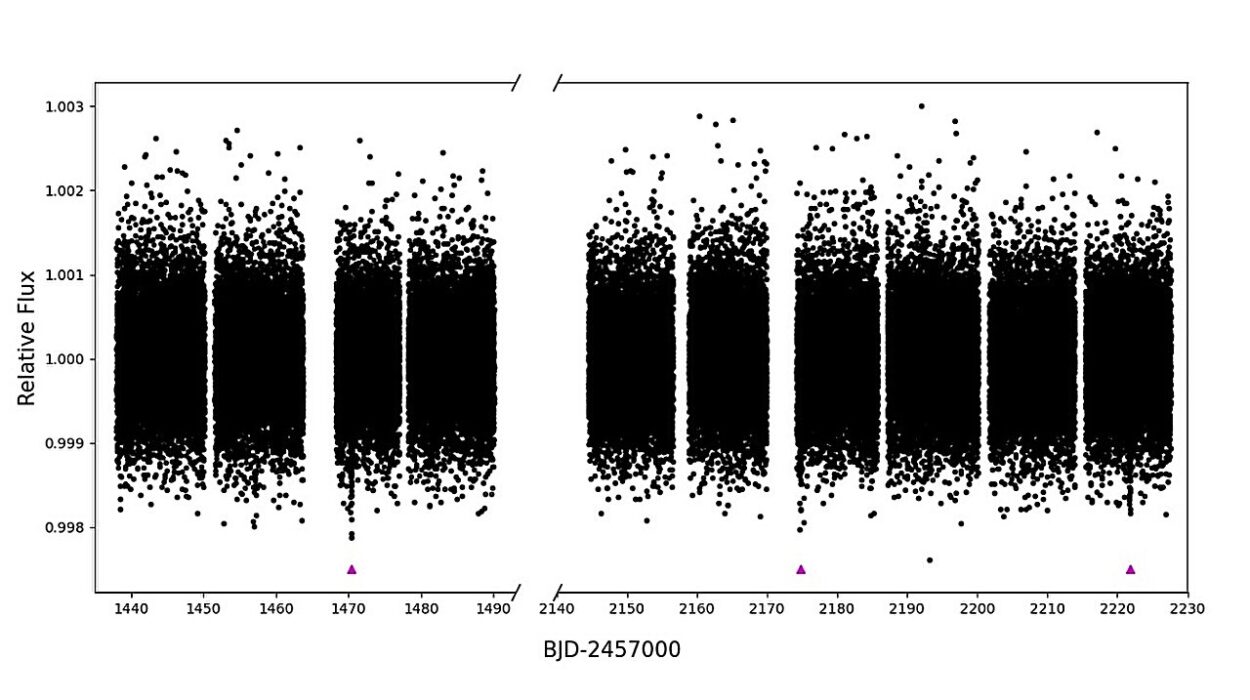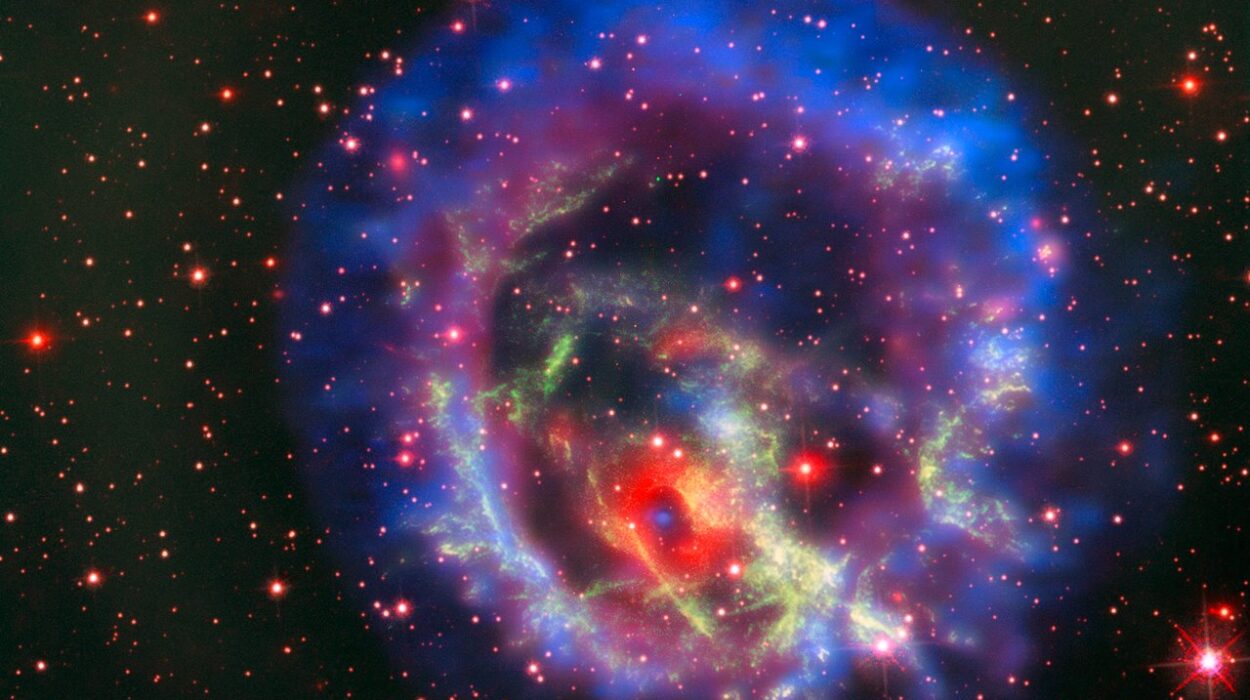In the silent heart of the Milky Way, far beyond the calm spiral arms that cradle stars like our Sun, lies a tempestuous and mysterious region: the Central Molecular Zone (CMZ). This region—teeming with dense gas, turbulent magnetic fields, and intense gravitational forces—is unlike anything in our local stellar neighborhood. While the CMZ accounts for only a fraction of the galaxy’s volume, it contains a disproportionate share of its mass, compressed into a sphere only a few hundred light-years across.
For decades, astronomers have scoured the sky for the fingerprints of planet formation. Most of what we know comes from relatively tranquil stellar nurseries in the galactic disk—regions where stars, and eventually planets, emerge from placid molecular clouds. But in the galactic core, where interstellar chaos reigns, we have barely scratched the surface.
Now, an international team of astronomers has pushed the boundaries of observational astrophysics with a groundbreaking survey of protoplanetary activity in the CMZ. Their study, the Dual-band Unified Exploration of three Central Molecular Zone Clouds (DUET), marks a pivotal step forward in our understanding of how stars and planetary systems can form in the most extreme environments the Milky Way has to offer.
The Harsh Cradle of Stars
The CMZ is a paradox: a galactic region filled with the raw materials for star formation—yet strangely inefficient at forming stars. Despite its massive stores of molecular hydrogen, star formation rates in the CMZ are an order of magnitude lower than in the galactic disk. This has puzzled astronomers for years. The extreme conditions in the CMZ—elevated temperatures, high turbulence, and strong magnetic fields—appear to suppress the gravitational collapse of gas into stars.
Yet stars do form here. And as the DUET study reveals, so do the building blocks of planetary systems.
The discovery of over 500 dense molecular cores in just three molecular clouds within the CMZ provides compelling evidence that despite its chaotic nature, this region is actively seeding the galaxy with new stars and, potentially, new worlds.
Enter DUET: A Harmonious Blend of Technology and Vision
Led by researchers from the Kavli Institute for Astronomy and Astrophysics at Peking University, the Shanghai Astronomical Observatory, and the University of Cologne, the DUET project was designed to push the observational envelope. Utilizing the Atacama Large Millimeter/submillimeter Array (ALMA), they embarked on the most sensitive and high-resolution survey ever conducted in the CMZ.
ALMA’s location in Chile’s Atacama Desert—one of the driest places on Earth—offers an unparalleled window into the millimeter and submillimeter wavelengths of light. These wavelengths are ideal for penetrating the dense, dusty regions of star-forming clouds that are invisible to optical telescopes. ALMA’s interferometric capabilities, combining the signals from 66 individual antennas spread over distances of up to 16 kilometers, allow astronomers to resolve structures with astonishing clarity.
In the DUET study, ALMA was configured for dual-band observations—simultaneously capturing data at two wavelengths with matched spatial resolution. This technique provides crucial information about the physical properties of the dust and gas within each core, including temperature, density, and composition.
Little Red Dots: The Tell-Tale Signs of Disks
As the ALMA data poured in, the researchers were greeted by an unexpected sight: more than 70% of the dense cores exhibited a pronounced “redness” in their emission. These weren’t literal colors, of course, but spectral signatures—indicators that something was absorbing more light at shorter wavelengths than expected.
Fengwei Xu, the study’s lead author and a doctoral researcher at the University of Cologne, described his surprise: “We were astonished to see these ‘little red dots’ scattered across the entire cloud structures. They’re not just statistical anomalies. They are telling us something fundamental about what’s happening inside these cores.”
Two primary explanations emerged. The first: many of these dense cores might not be uniform spheres of gas and dust, as previously assumed. Instead, they may contain smaller, optically thick structures that absorb shorter-wavelength light—consistent with the presence of protoplanetary disks.
The second possibility centers on dust grain evolution. In typical interstellar clouds, dust grains are minuscule—mere microns in size. But in regions where protoplanetary disks are forming, these grains can grow to millimeter sizes and beyond. The presence of such large grains would alter the emission profile of the core and could account for the observed reddening.
Either explanation is revolutionary. Both point to a single, transformative conclusion: protoplanetary disks—precursors to planetary systems—may be widespread even in the CMZ’s extreme environment.
Planetary Birthplaces Beyond the Disk
To appreciate the significance of this discovery, it’s important to understand what a protoplanetary disk is. After a molecular cloud core collapses to form a protostar, the remaining material flattens into a rotating disk around it. This disk, composed of gas and dust, is the nursery in which planets eventually form.
Studying these disks is crucial to understanding how planets like Earth—and entire solar systems—come into being. Until recently, nearly all observed protoplanetary disks were located in regions of calm and stability: places like the Orion Nebula or the Taurus Molecular Cloud. The CMZ is a stark contrast.
Professor Xing Lu of the Shanghai Astronomical Observatory, the principal investigator for the ALMA observing project, explained the technological feat: “Resolving structures only a few thousand astronomical units across at a distance of over 17,000 light-years is incredibly difficult. ALMA makes that possible.”
In essence, the team used ALMA to peer into the galactic equivalent of a stormy volcano and found the delicate seeds of planetary systems quietly forming amid the chaos.
Implications for Galactic Evolution and Planetary Diversity
The implications of the DUET study are vast. If planetary systems can form in the CMZ, then the conditions necessary for planet formation may be more universal than we previously believed. This expands the potential habitability of the galaxy and challenges long-standing models of planet formation that were built on relatively placid environments.
Moreover, it suggests that the diversity of planetary systems in the galaxy may be greater than we imagined. Disks forming in the CMZ are subject to stronger gravitational tides, higher radiation fields, and more frequent shock waves than those in the disk. The planets that emerge from such disks may follow evolutionary paths quite different from our own solar system.
Could these extreme environments give rise to exotic planets—massive gas giants in close orbits, or rocky planets with wildly tilted axes? Could moons form more easily or be stripped away by gravitational tides? These are the questions astronomers are now eager to explore.
Refining the Models: From Theory to Observation
The DUET team didn’t stop at observation. They also conducted sophisticated radiative transfer modeling to test various scenarios. Professor Hauyu Baobab Liu from the National Sun Yat-sen University led this effort, simulating how light interacts with dust grains of different sizes, shapes, and compositions.
“Our models suggest that some of these cores contain dust grains larger than anything typically seen in the interstellar medium,” Liu explained. “Such grains are likely formed in disks and expelled, possibly by the outflows that occur when a young star begins to push material away from itself.”
This finding offers a vital clue: not only are disks likely forming in the CMZ, but they may also be dynamically interacting with their environment, shaping and being shaped by the violent conditions around them.
A New Window into Cosmic Origins
For Professor Ke Wang at the Kavli Institute for Astronomy and Astrophysics, who supervised the study, the DUET survey opens a rare and precious window: “For the first time, we have a statistically significant sample of dense cores in the CMZ with sufficient resolution to explore their internal structure. This is a tremendous step toward understanding how star and planet formation proceed under such extreme conditions.”
The study’s findings are not only a triumph of observational astronomy but also a bridge between theory and evidence. For decades, simulations of early solar system formation have operated under the assumption that the conditions near our Sun were typical. But if the CMZ results are any indication, the diversity of stellar and planetary birthplaces is far greater than we imagined.
Next Steps: The Promise of Multi-band Exploration
The DUET study is just the beginning. Future observations with ALMA and next-generation instruments will delve even deeper. Multi-band surveys—spanning not just millimeter but also infrared and radio wavelengths—will help to paint a more complete picture of the physical processes at work.
Upcoming missions like the James Webb Space Telescope (JWST) may also contribute. Although its resolution cannot match ALMA’s in the radio spectrum, JWST’s ability to peer into the infrared universe could complement these findings by revealing the chemical signatures and thermal profiles of these early-forming systems.
With more comprehensive data, researchers hope to categorize these “little red dots” more precisely—determining their age, mass, disk orientation, and even the likelihood of planet formation within them.
A Cosmic Symphony
The DUET project’s name was no accident. Like a musical duet, it represents a harmony of data and interpretation, of observation and modeling, of discovery and theory. It reflects the broader human endeavor in astronomy: to make sense of the universe’s most profound mysteries by combining the tools of science with the imagination of inquiry.
In the heart of the Milky Way, amid gravitational turmoil and cosmic violence, stars are being born. Around them, in disks of dust and gas, the seeds of new worlds quietly take shape.
We are witnessing a chapter in the galaxy’s story that until now remained hidden in shadow and silence. Thanks to DUET, those shadows are lifting—and the symphony of creation is finally being heard.
Reference: Fengwei Xu et al, Dual-band Unified Exploration of three CMZ Clouds (DUET), Astronomy & Astrophysics (2025). DOI: 10.1051/0004-6361/202453601
